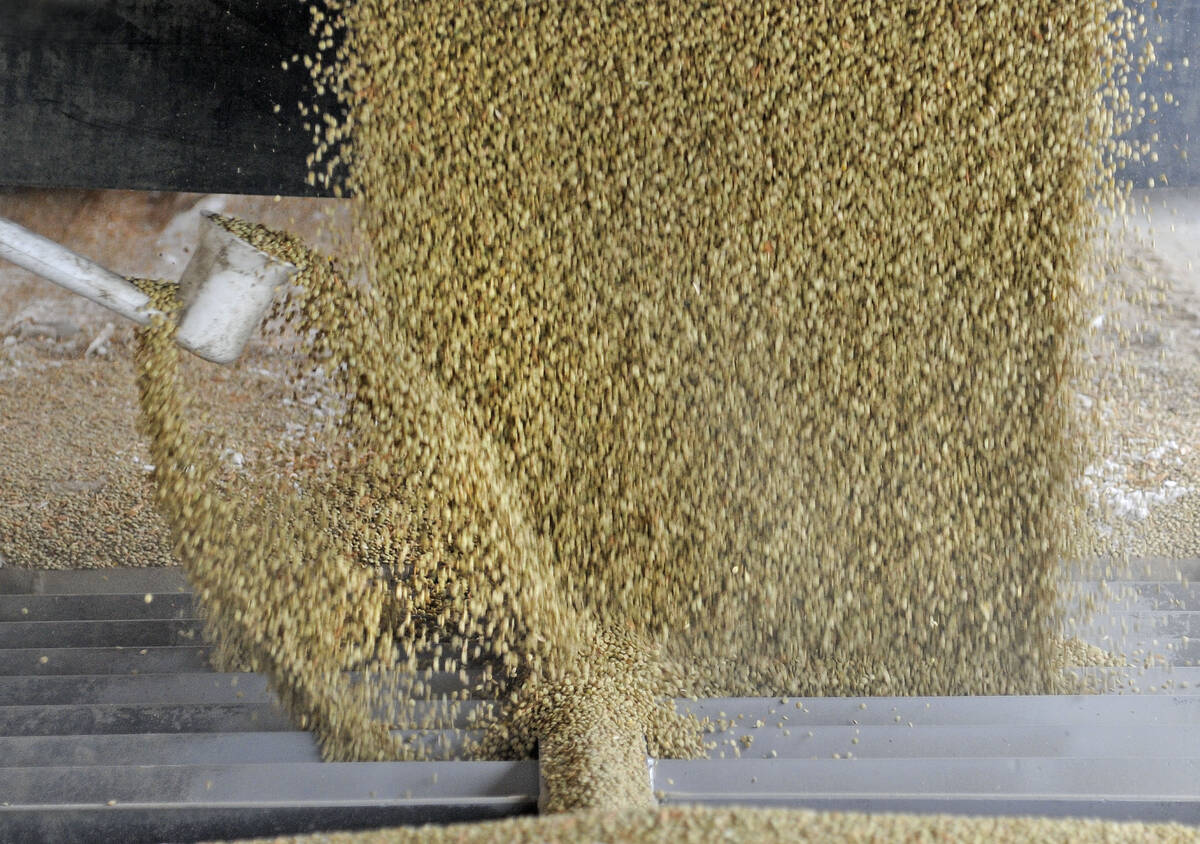India’s pea extension may offset Chinese tariffs

SASKATOON — Canada’s pea producers are breathing a sigh of relief after India announced it is extending duty-free access for yellow peas through March 31, 2026.
The exemption was set to expire May 31.
“We’ve got really important and positive news for the industry here with that extension, given what we’re facing in China,” said Greg Cherewyk, president of Pulse Canada.
Read Also


Good global green lentil production expected this year
There is potential for a big increase in green lentil production in 2025-26 after several years of tight supplies, says an analyst.
He hopes the Indian market will help mop up lost sales to China.
In March, China slapped a 100 per cent import tariff on Canadian peas, canola oil and canola meal and a 25 per cent tariff on pork and seafood in response to Canada’s tariffs on Chinese electric vehicles, steel and aluminum.
The tariff effectively closed the door to one of Canada’s top pea markets.
“There wasn’t a lot to celebrate with the tariffs in place with China,” he said.
“Now we feel a little bit more optimistic about the future.”
Analysts at the recent Global Pulse Confederation’s Pulses 2025 conference in Singapore were forecasting that India will import 1.2 to two million tonnes of peas in 2025-26.
Cherewyk thinks Canada could get the lion’s share of that business because Russia will be busy supplying China.
Agriculture Canada is forecasting 3.13 million tonnes of Canadian production and 1.3 million tonnes of exports.
Traders at the conference think Russia will produce about four to 4.5 million tonnes of peas, leaving about two to 2.3 million tonnes available for export.
They believe China will import about 2.1 million tonnes of the crop, which would take most of Russia’s exports.
Cherewyk thinks India’s new March 31, 2026, bills of lading deadline provides enough of a window for Canada to ship its new crop peas to India.
He is happy that India seems to be providing better long-term clarity with its policy announcements of late.
He was also pleased to hear at the conference that yellow peas are no longer thought of purely as a desi chickpea substitute in India but appear to have become a staple in the diets of India’s low-income population.
Cherewyk hopes to also hear some good news on China soon. Canada’s pulse, canola, meat and seafood sectors are all pressuring Ottawa to find a resolution to the China tariff issue.
“We’re still confident that we’re going to see some progress on the China front,” said Cherewyk.
“If we can get it, then the picture looks even better, for sure.”
While India’s policy announcement was well received by Canadian farmers and Indian consumers, it didn’t go over well with another segment of the population.
Vivek Agrawal, managing director of JLV Agro, an Indian commodity brokerage firm, said the trade was not pleased.
“The market is over-flooded with all the pulses,” he said.
He expects pulse prices in India to decline in the wake of the announcement.
The India Pulses and Grains Association had been pushing for a 50 per cent import duty on yellow peas to make the price equivalent to the government’s minimum support price for desi chickpeas.
The Indian government estimates that the country’s farmers produced 11.34 million tonnes of chickpeas in 2024-25, which would be below the five-year average of 11.97 million tonnes.
“The fact chickpea output remains below average likely contributed to the decision to allow yellow peas to be imported duty free,” Stat Publishing said in a recent article.
The size of the 2025-26 crop will depend a lot on monsoon rains. The Indian Meteorological Department (IMD) is forecasting a 59 per cent chance of an above-normal 2025 southwest monsoon.
The start of this year’s monsoon was May 27, five days ahead of the typical June 1 onset.
IMD predicts that rainfall in the June through September period will reach 105 per cent of the 50-year average.
There was also some recent news from an important lentil producing and consuming region of the world.
The Turkish Statistical Institute is forecasting 340,000 tonnes of red lentil production in that country, a 16 per cent drop from last year.
Tuba Memis, general manager of the Turkish pulse processing firm Memisoglu Group, said seeded area was the same as last year, but the yields are low.
Conditions were “very dry” in southeastern Turkey, where 90 per cent of the country’s red lentils are seeded.
“Farmers are saying yield is very less in those areas,” she said in an email.
“They are saying yield is around 100 to 150 kilograms per acre, which is very low.”
Cherewyk said the lentil market will be dictated by production in Canada, Australia and the Black Sea region.
Agriculture Canada is forecasting Canada will produce 2.33 million tonnes of lentils, a similar-sized crop as last year.
Panelists at the GPC conference think Australia’s contribution could reach 1.6 million tonnes, while the Black Sea region could produce 800,000 tonnes of red and green lentils.
Source: producer.com


